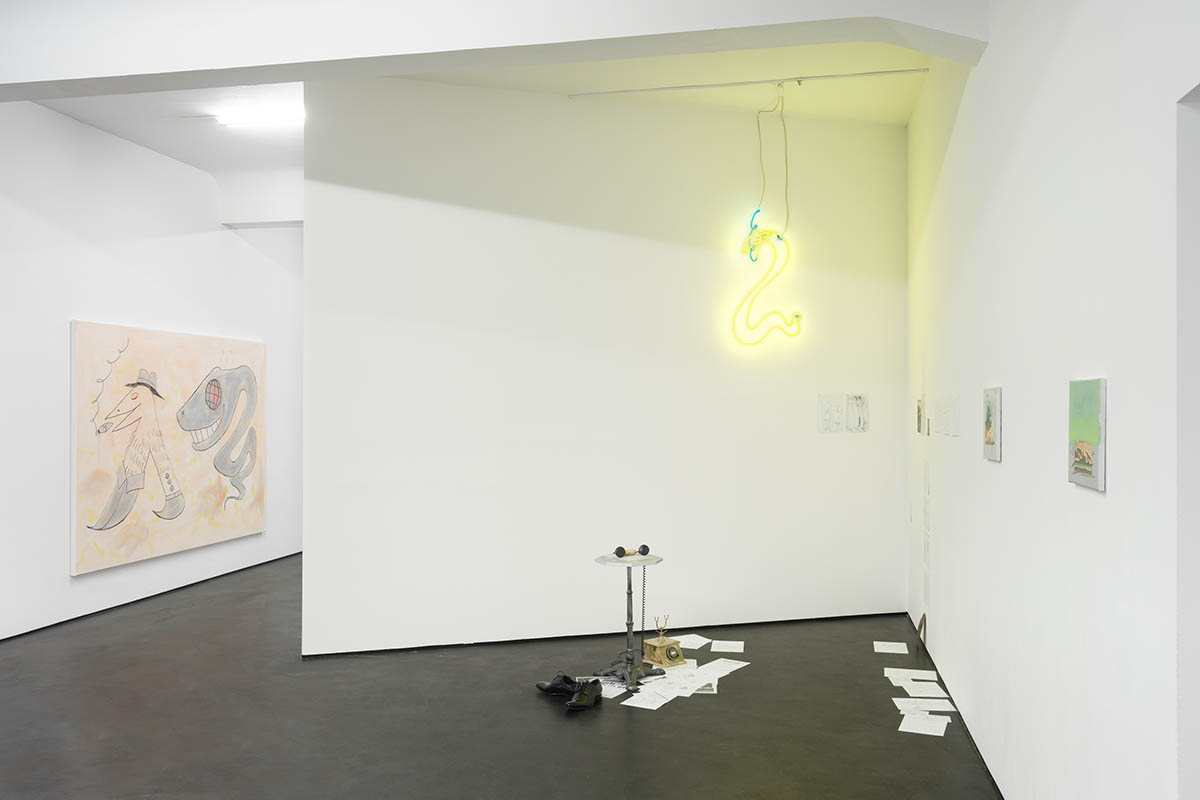
How did it come to the collaboration with max goelitz, and what does this collaboration represent for you?
A few years ago, I had a show in Düsseldorf at KAI10 Arthena Foundation for the ars viva prize 2019. It was the first time I had the opportunity to exhibit a large installation that served as a foundational piece for the development of my work in recent years. Max saw that show, and though we had known each other previously from Munich, this marked the moment we began working together. Our first show at max goelitz opened during the first lockdown. Having a collaboration, technology experience, and exhibition happening in that strange time was reassuring.
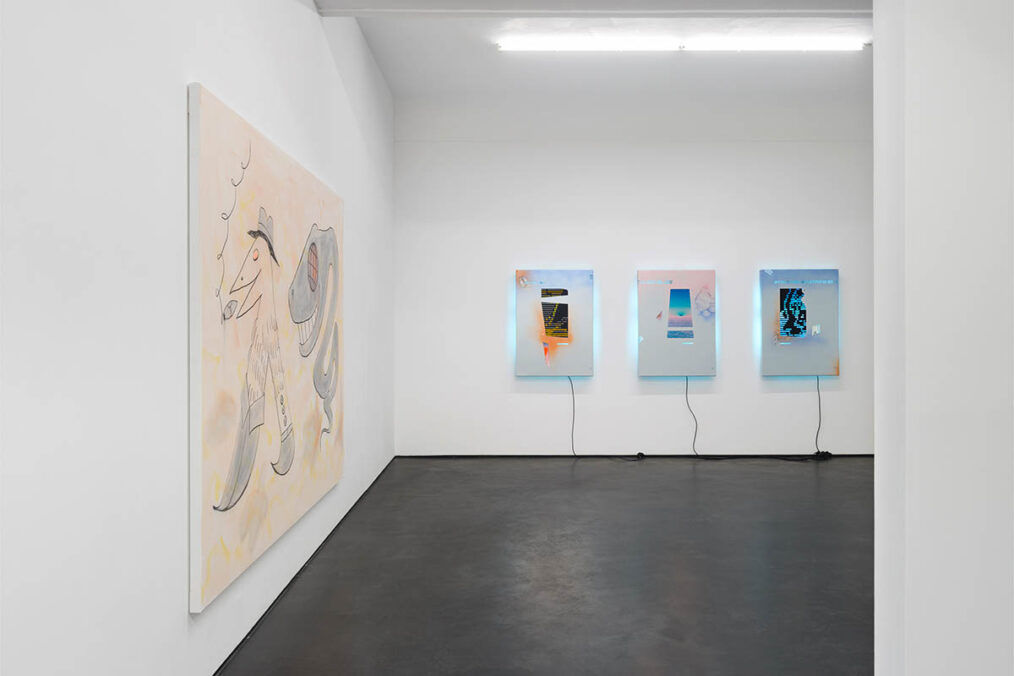


How does your studio look these days?
I share my studio with at least one other person, and we have neighbors next door. I like that our studio is built in a flexible way, allowing us to adjust the spaces according to our needs. There’s a cabin for spray painting, and we have a small kitchen with the centerpiece being a marble coffee table I built specifically for the studio. I’m a huge coffee fan, so this has become my daily ritual—having coffee at this table is something I look forward to every day. Next to the room where I paint and work, there’s a small office with a computer. I wanted a separation between the computer area and the rest of the space because technology always seems to demand your time.
Since we’re on the topic of technology, I read about present pendulum, your upcoming solo exhibition at max goelitz. You mentioned „metamodernity“—could you explain how you interpret it through your artistic practice and in a broader art context?
After discussing my work with a friend who’s a futurologist, he recommended “Notes on Metamodernism” by Robin van den Akker, and Timotheus Vermeulen (or in German, ANMERKUNGEN ZUR METAMODERNE). Around 2018/2019, while reading it, I realized it spoke to many of the thoughts I’d been grappling with but hadn’t put into words. It helped me see my struggles with the contradictions of our time as potential topics for my work, deeply relevant to our times. The book highlighted the lack of a perfect theory that fully aligns with my work; most theories are rooted in postmodernism, while metamodernism recontextualizes these ideas, questioning if and when postmodernity truly ended. Metamodernism accommodates both, irony and the complex societal issues we face today. You can bring humor into it, yet address the hybrid crises of our time. For me, it’s liberating since my approach isn’t scientific but intuitive, enthusiastic, and sometimes humorous.
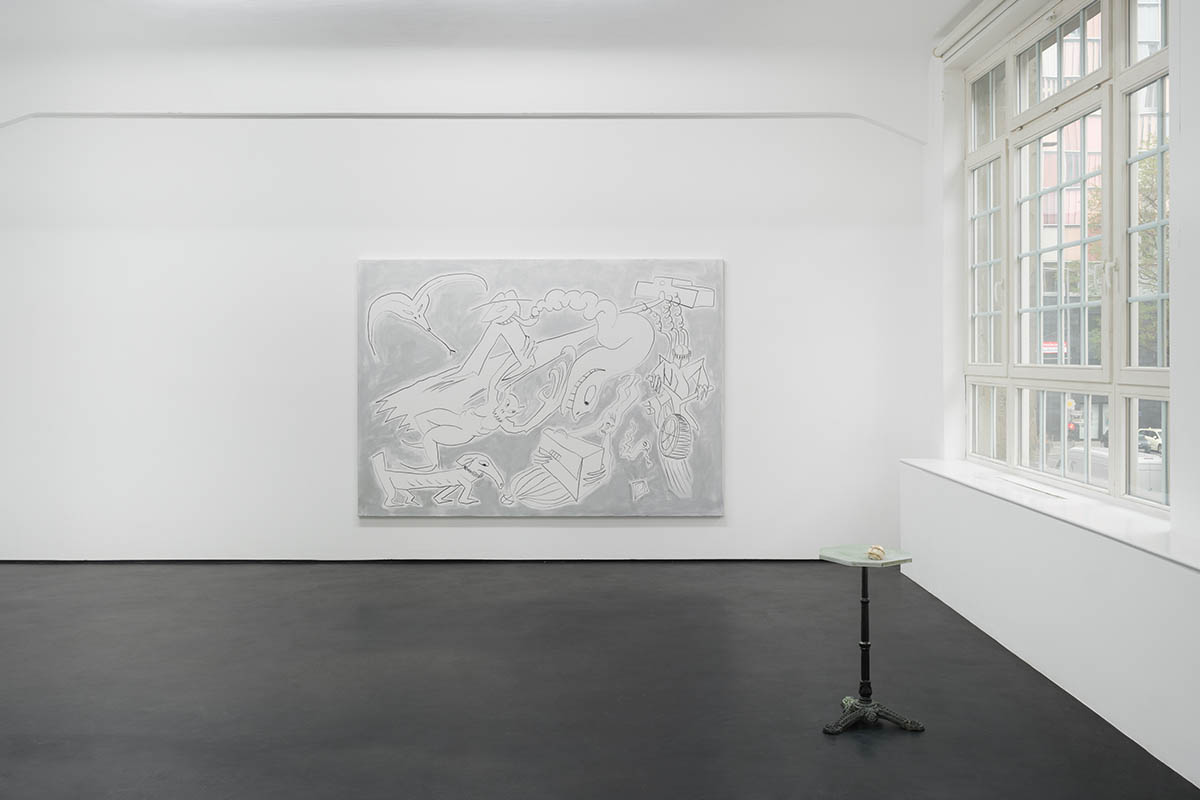
Every text I read about your work is so articulate. Do you collaborate with colleagues or friends when writing these texts?
That’s a good question. I`m lucky to have brilliant writers and thinkers around me and often I wonder if I could integrate more of my own writing into my work. For me, the act of writing stream of consciousness or poetry is very similar to the act of drawing. My main conceptual work happens in my sketchbook, where writing and drawing are done with the same tool. Pencil and paper are the most effective tools for tracing thoughts. In drawing as in writing inconsistency is allowed—you can make a drawing, turn the page, and continue, only recognizing patterns after years. Sometimes I’m in the right mindset to write longer texts, but it’s usually fragments, poetry, and titles. My artist name includes „&NE,“ reflecting my approach to working as a larger entity or brand, integrating collaborative roles, fictional corporate identities, and high-tech production processes into my practice.

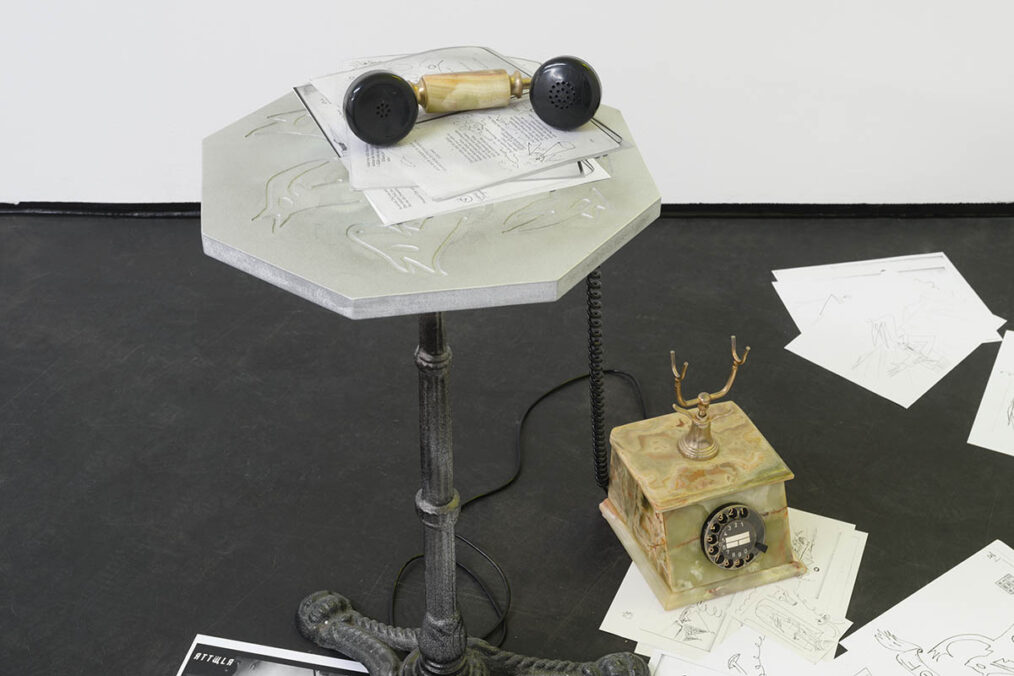
Given digital work, do you see drawing and painting as a more fragile, imperfect side of your practice?
I see it the other way around. For me, a painted work is much stronger and more honest than all the technology we constantly rely on.
Animals like snakes, dogs, and horses—and mythical creatures like dragons—often appear in your work. What do they represent?
The idea of culture connects us to mythology, Roman times, and the Middle Ages. I’ve always been drawn to the mindset of earlier cultures that, without the internet or our scientific advancements, still understood the world as ungovernable and believed in demons, dragons, and gods. Their beliefs shaped their lives, and we might think today’s mindset is more empiric, but it is also disconnected from reality. There are other influences, too—like the comics I read as a child, where everything is possible, the rules of the material world do not count and characters can have limitless power. This approach on reality had a lasting impact on me.
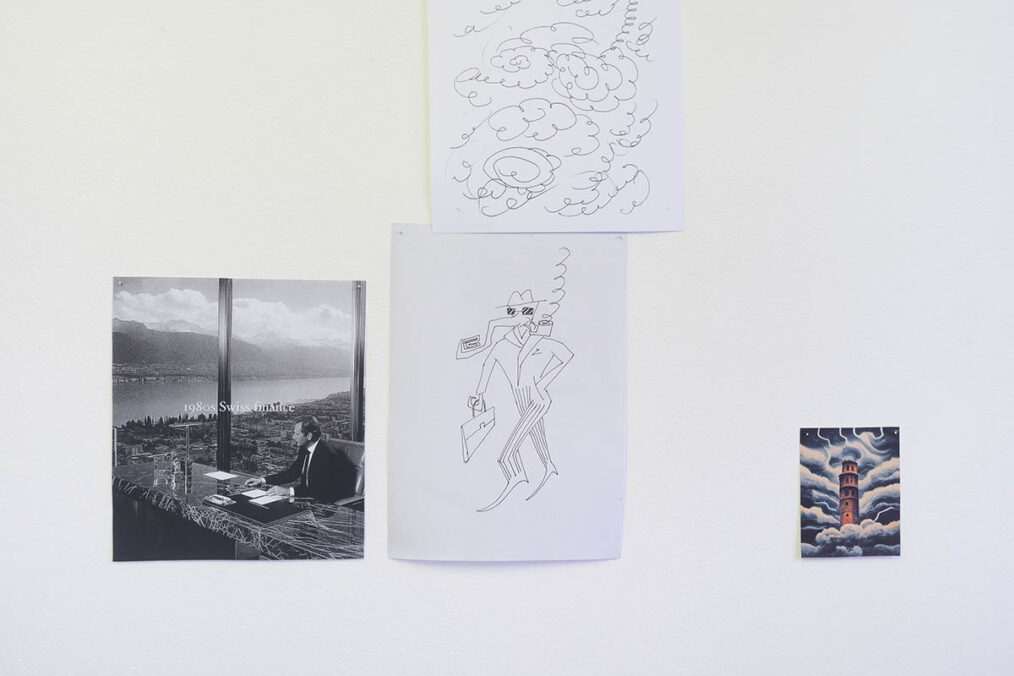
„Archeology of the future“ is a term associated with your work. How does it apply to your practice?
For me, it’s about broader time frames—connecting the present to both the past and the future. To understand the present, we need to look at it from the future, see what’s happened, and think about what might come. Humans exist for only a short time. I believe that the only unlimited resource we have is knowledge.
Can you explain the phrase “present pendulum,” also the title of your next solo exhibition, and how it connects to what viewers will experience at max goelitz in Berlin?
A pendulum represents the tendency to swing between more than two extremes, which ties back to metamodernity’s in-between space—whether it’s between irony and seriousness or raison d’être and doubt. It also relates to time. We can never truly be “present” because each moment is always slipping away. We are always on the threshold to different futures. I’m drawn to this in-between energy.

Solo exhibition: Niko Abramidis &NE „present pendulum“
Exhibition duration: 22 November 2024 – 1 February 2025
Opening: Friday, 22 November 6–9 pm
Opening times: Thursday-Saturday 13-18h
The solo exhibition present pendulum by Niko Abramidis &NE explores a mythology of the present marked by analysis, comic-like exaggeration, and a hopeful aesthetic. Following the euphoria for entrepreneurship and financial economics that characterized his installation works of recent years, his new paintings, drawings, and objects outline a reflection on the status quo of a hybrid reality and a pause in the face of an open future. They propose a deconstruction of the old world order and question the promise that technology and progress will solve all human problems. Great attention is paid to the medium of drawing in order to express the fragility of this liminal state and to emphasize immediacy, sensitivity, and poetics. Based on the concept of „metamodernity“, Niko Abramidis &NE’s current works create visual worlds of an undecided future, oscillating like a pendulum between utopia and dystopia in search of a new equilibrium.
Address and contact:
max goelitz
Rudi-Dutschke-Strasse 26, 10969 Berlin
www.maxgoelitz.com
Niko Abramidis &NE – www.nikoabramidis.eu, www.instagram.com/entity_network/
Niko Abramidis &NE (*1987 in Europe, lives and works in Munich and Berlin, DE) opens up a diverse spectrum dealing with economic structures and visions of the future. Within his drawings, paintings, sculptures, and room installations, Niko Abramidis &NE develops parallel universes in which he creates fictitious corporate identities and appropriates forms of expression from financial economics. This also includes the play with words through signs, symbols, and ciphers, via which he transfers his artistic ideas of myth and literary fiction. The artist develops a semiotics of archaic symbols paired with sketchy drawings, which he puts together using the latest technologies.
*The artist’s name includes “&NE,” reflecting a broader identity that goes beyond working solo—it’s a connection to a larger entity. Early on, he realized that working under his personal name felt limiting and instead embraced the role of an entrepreneur, creating a personal brand that operates like a company. This approach allows him to playfully switch roles—acting as CEO of fictional companies, an external controller, or even a work-refusing employee. He also develops unified corporate identities for different groups of workers. While much of the work is done independently in the studio, a degree of automation and collaboration with machines and high-tech tools is present.



